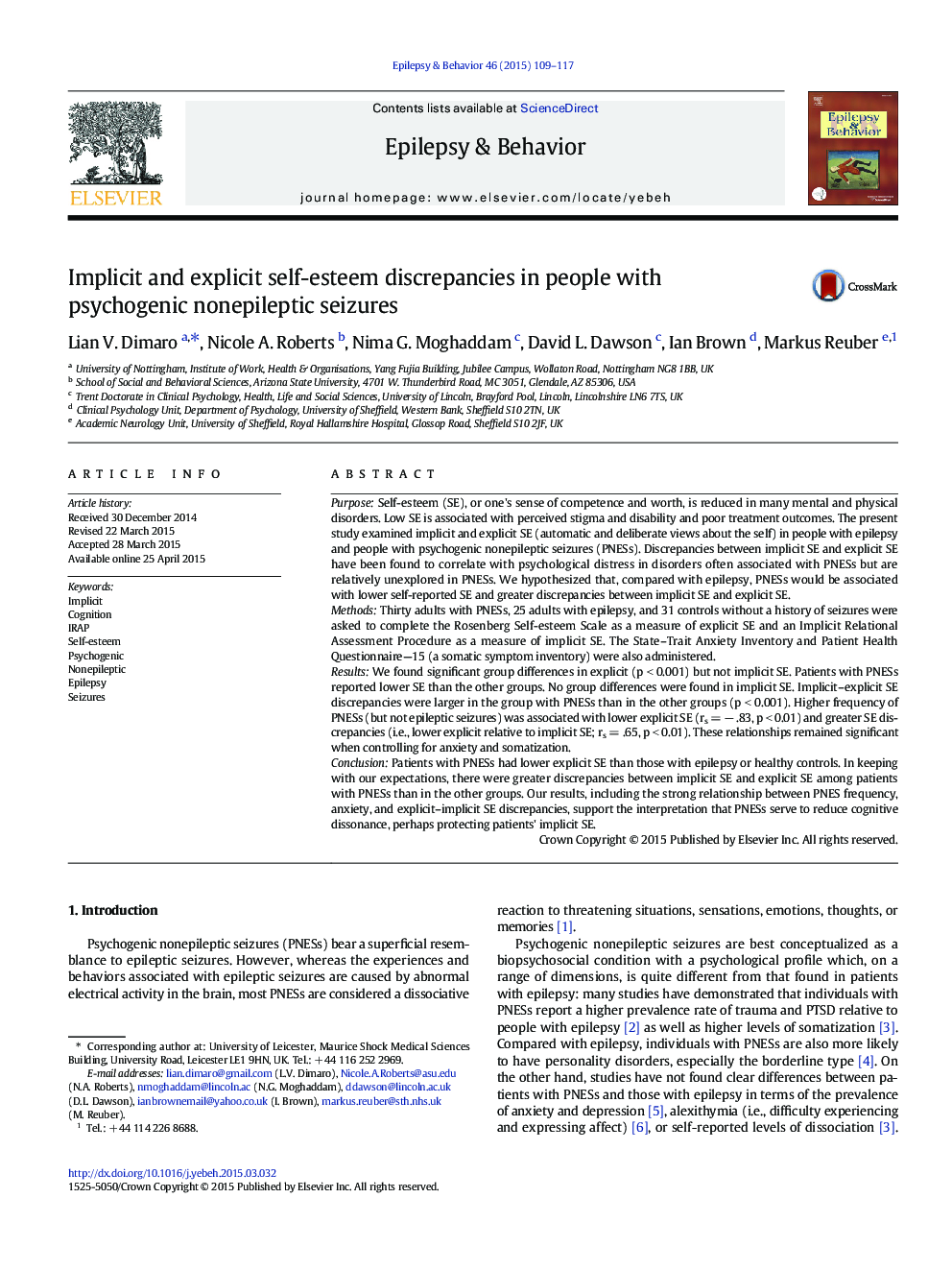| کد مقاله | کد نشریه | سال انتشار | مقاله انگلیسی | نسخه تمام متن |
|---|---|---|---|---|
| 6010944 | 1579843 | 2015 | 9 صفحه PDF | دانلود رایگان |
- Patients with PNESs self-reported a lower self-esteem than healthy controls.
- Patients with PNESs self-reported a lower self-esteem than those with epilepsy.
- Implicit-explicit self-esteem discrepancies were larger in the group with PNESs.
- There was a strong relationship between explicit-implicit SE discrepancies and PNESs.
PurposeSelf-esteem (SE), or one's sense of competence and worth, is reduced in many mental and physical disorders. Low SE is associated with perceived stigma and disability and poor treatment outcomes. The present study examined implicit and explicit SE (automatic and deliberate views about the self) in people with epilepsy and people with psychogenic nonepileptic seizures (PNESs). Discrepancies between implicit SE and explicit SE have been found to correlate with psychological distress in disorders often associated with PNESs but are relatively unexplored in PNESs. We hypothesized that, compared with epilepsy, PNESs would be associated with lower self-reported SE and greater discrepancies between implicit SE and explicit SE.MethodsThirty adults with PNESs, 25 adults with epilepsy, and 31 controls without a history of seizures were asked to complete the Rosenberg Self-esteem Scale as a measure of explicit SE and an Implicit Relational Assessment Procedure as a measure of implicit SE. The State-Trait Anxiety Inventory and Patient Health Questionnaire-15 (a somatic symptom inventory) were also administered.ResultsWe found significant group differences in explicit (p < 0.001) but not implicit SE. Patients with PNESs reported lower SE than the other groups. No group differences were found in implicit SE. Implicit-explicit SE discrepancies were larger in the group with PNESs than in the other groups (p < 0.001). Higher frequency of PNESs (but not epileptic seizures) was associated with lower explicit SE (rs = â .83, p < 0.01) and greater SE discrepancies (i.e., lower explicit relative to implicit SE; rs = .65, p < 0.01). These relationships remained significant when controlling for anxiety and somatization.ConclusionPatients with PNESs had lower explicit SE than those with epilepsy or healthy controls. In keeping with our expectations, there were greater discrepancies between implicit SE and explicit SE among patients with PNESs than in the other groups. Our results, including the strong relationship between PNES frequency, anxiety, and explicit-implicit SE discrepancies, support the interpretation that PNESs serve to reduce cognitive dissonance, perhaps protecting patients' implicit SE.
Journal: Epilepsy & Behavior - Volume 46, May 2015, Pages 109-117
